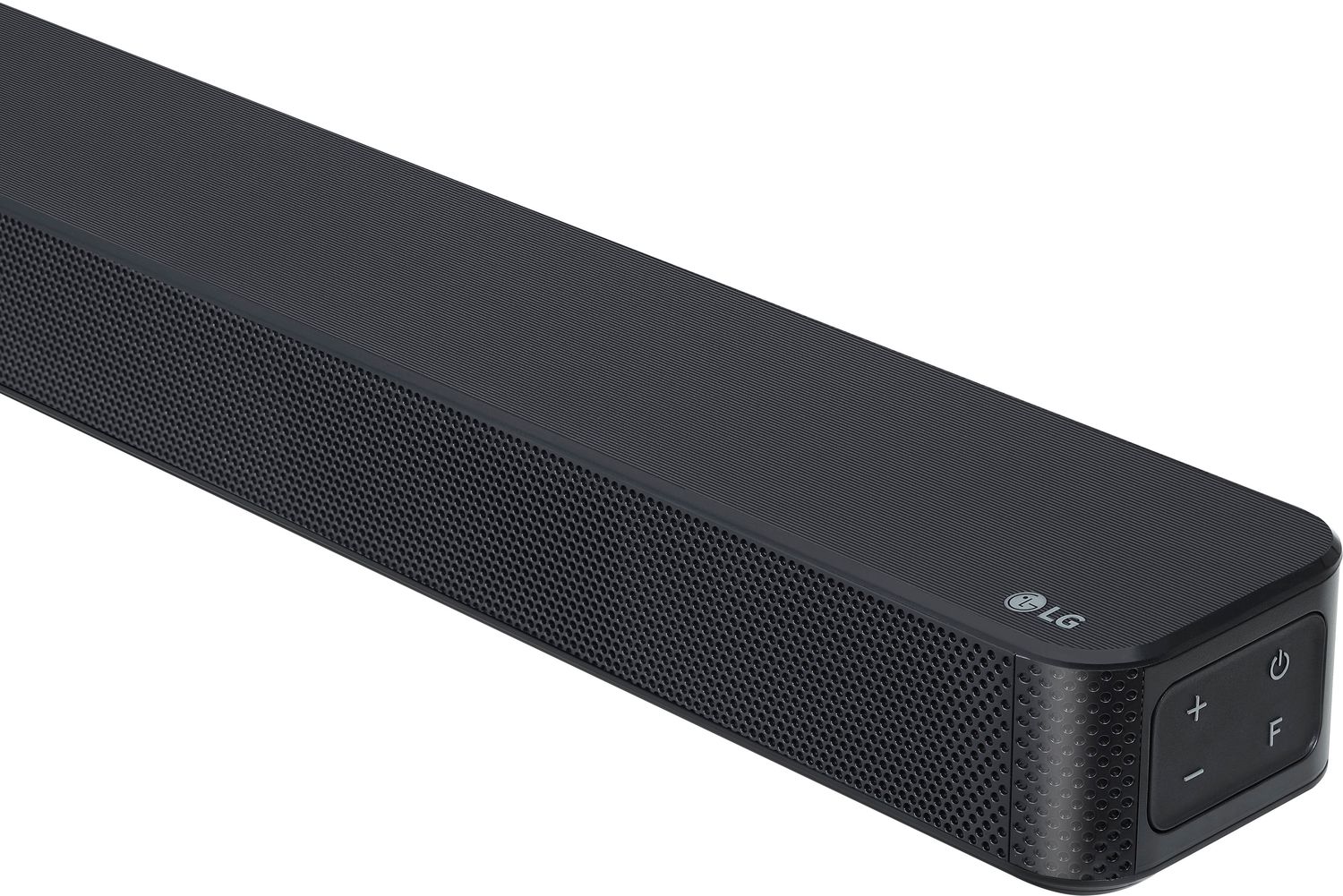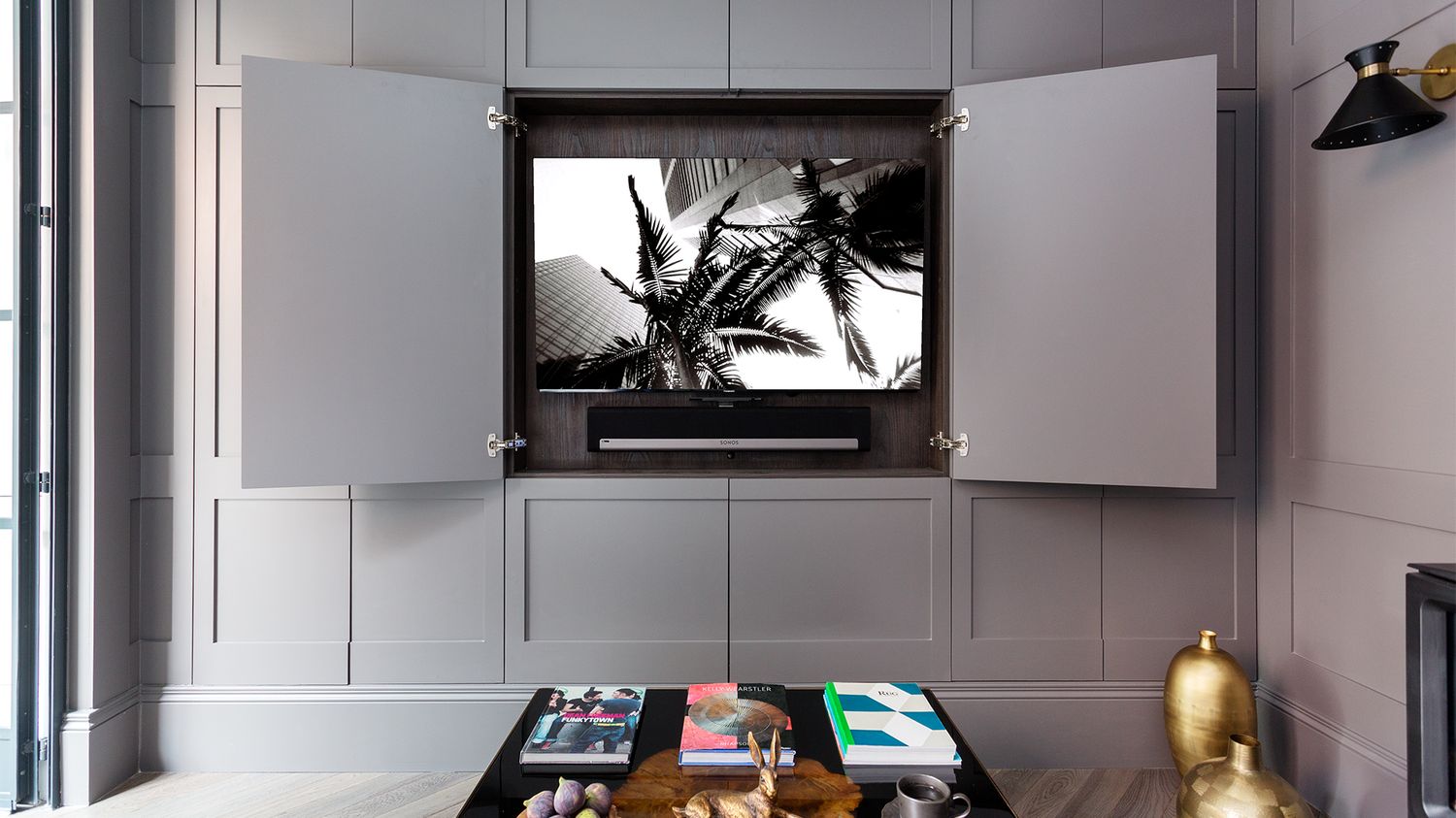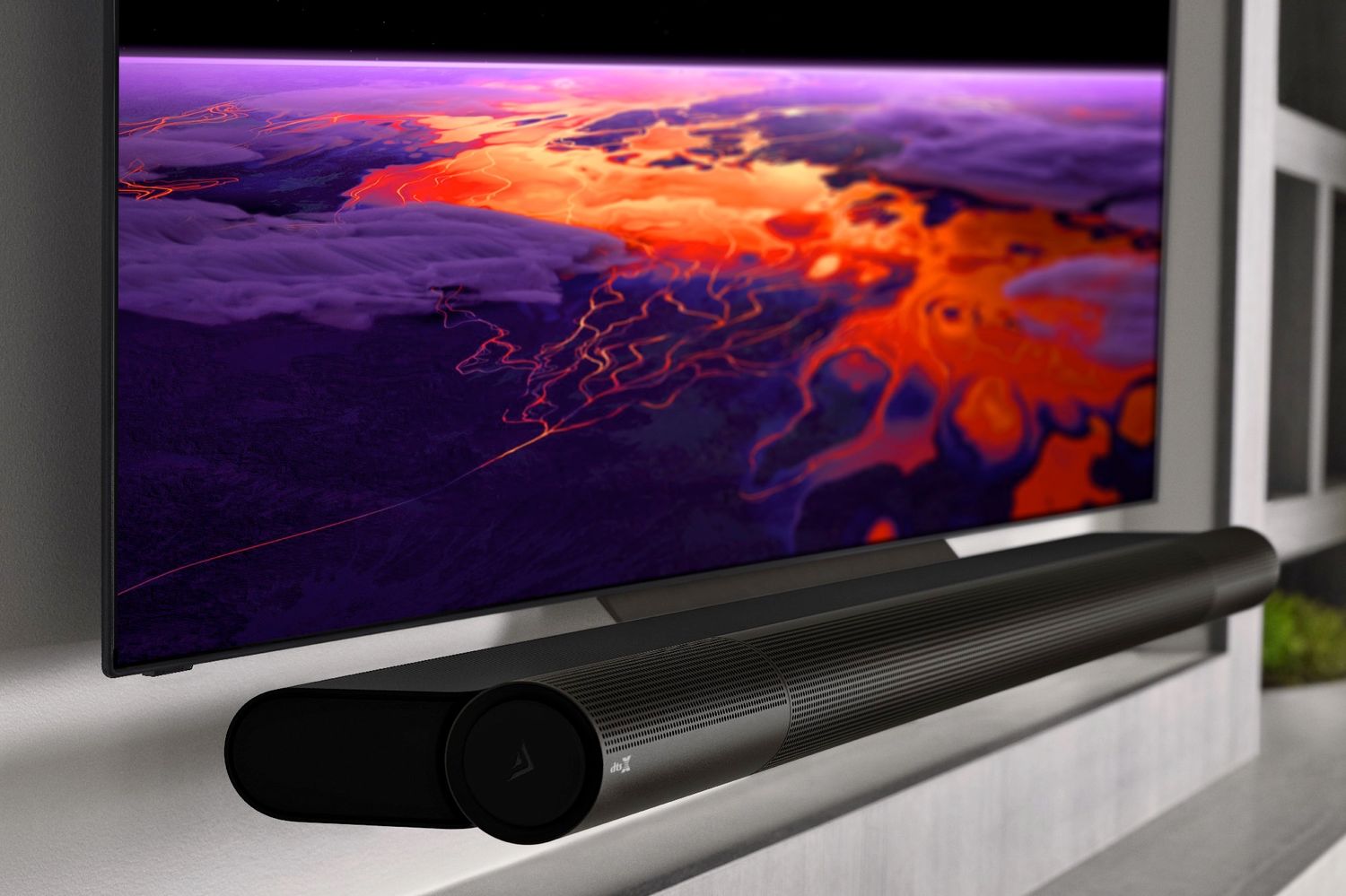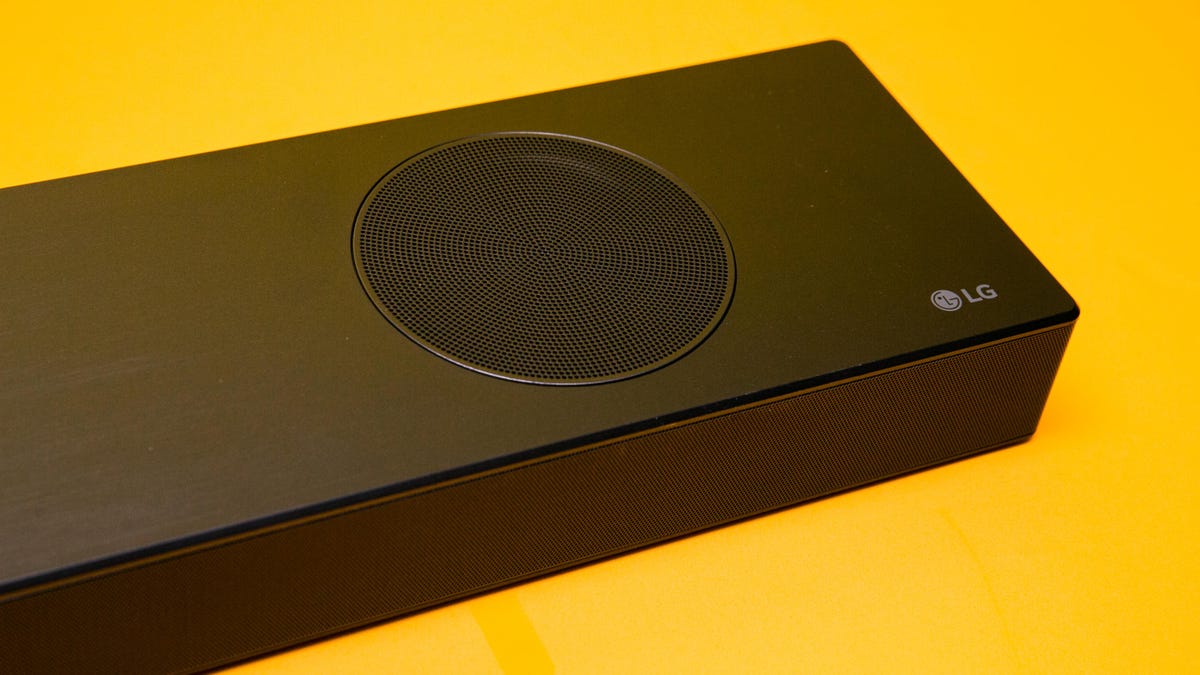Home>Production & Technology>Sound Bar>What Is Optical On A Sound Bar


Sound Bar
What Is Optical On A Sound Bar
Modified: January 22, 2024
Learn what optical on a sound bar means and how it enhances your audio experience. Discover the benefits of using a sound bar for superior sound quality.
(Many of the links in this article redirect to a specific reviewed product. Your purchase of these products through affiliate links helps to generate commission for AudioLover.com, at no extra cost. Learn more)
Table of Contents
Introduction
Sound bars have become increasingly popular as a way to enhance the audio experience when watching movies, TV shows, or listening to music at home. These sleek and compact devices are designed to deliver high-quality sound without the need for a complex setup or multiple speakers. One important feature of sound bars is the optical connection, which provides a seamless audio connection between the sound bar and the audio source.
In this article, we will explore the concept of optical connections in sound bars, their benefits, and their limitations. Understanding how optical connections work and their advantages and disadvantages can help you make an informed decision when choosing a sound bar for your home entertainment system.
Before diving into the details, it is important to clarify what we mean by “optical.” In the context of sound bars, optical refers to the use of a digital optical cable to transmit audio signals. This cable utilizes fiber optic technology to transmit digital audio data in the form of light pulses, providing a high-quality audio connection.
Now that we have a basic understanding of what an optical connection is, let’s explore how it is used in sound bars and why it is a popular choice among audio enthusiasts.
Definition of Optical
In the context of sound bars, an optical connection refers to the use of a digital optical cable to transmit audio signals between the sound bar and the audio source. This cable, also known as a Toslink or SPDIF cable, utilizes fiber optic technology to transmit digital audio data in the form of light pulses.
The optical connection is a digital interface that ensures a lossless transmission of audio signals, providing a high-quality audio experience. Unlike analog connections, which can be susceptible to interference and signal degradation, the optical connection delivers clear and noise-free sound.
One of the key advantages of the optical connection is its ability to support uncompressed audio formats, such as Dolby Digital and DTS, which are commonly used in movies and TV shows. These formats provide a surround sound experience, with distinct audio channels for a more immersive viewing experience.
Optical connections also support higher sample rates and bit depths compared to analog connections, resulting in a more accurate reproduction of audio. This is particularly important for audiophiles who have a discerning ear for fine details and nuances in the audio.
Moreover, optical connections are versatile and compatible with a wide range of audio sources. Whether you are connecting your sound bar to a TV, Blu-ray player, gaming console, or audio receiver, the optical connection can handle it all.
Overall, the optical connection in sound bars provides a reliable and high-quality audio transmission, ensuring that you experience the full potential of your home entertainment system.
Optical Connection in Sound Bars
Optical connections play a significant role in the functionality of sound bars. These connections allow for a seamless audio connection between the sound bar and various audio sources such as TVs, gaming consoles, and Blu-ray players.
Sound bars typically feature an optical input, where you can connect the digital optical cable from your audio source. This input is usually labeled as “Optical In” or “Toslink In” and is specifically designed to receive optical signals.
The optical connection in sound bars provides several benefits. Firstly, it ensures a high level of audio clarity and fidelity. The digital optical cable transmits audio signals in a digital format, which eliminates any potential analog audio distortion or interference.
Another advantage of the optical connection is its support for uncompressed audio formats. Sound bars with an optical connection can decode popular surround sound formats such as Dolby Digital and DTS. This allows for a more immersive audio experience, with clear and precise audio coming from different directions.
Furthermore, the optical connection is a reliable option for audio transmission. Unlike wireless connections that can be affected by signal dropouts or latency issues, the optical cable provides a stable and consistent audio signal. This is especially important for watching movies or playing games where audio synchronization is crucial for an immersive experience.
Additionally, the optical connection is easy to set up. All you need to do is connect one end of the digital optical cable to the sound bar’s optical input and the other end to the corresponding optical output on your audio source. This straightforward setup process makes it accessible for even non-technical users.
It’s worth noting that some sound bars may offer multiple optical inputs, allowing you to connect multiple audio sources simultaneously. This allows for greater flexibility and convenience, as you can easily switch between different devices without constantly unplugging and re-plugging cables.
Overall, the optical connection in sound bars is a crucial feature that ensures high-quality audio transmission, compatibility with various audio sources, and support for surround sound formats. Whether you’re enjoying your favorite movies, TV shows, or gaming sessions, the optical connection enhances the audio experience and immerses you in the soundscapes.
Benefits of Optical Connection in Sound Bars
The optical connection in sound bars offers several advantages that enhance the audio experience and make it a popular choice among audio enthusiasts. Let’s explore some of the key benefits:
1. High-Definition Audio: The optical connection supports the transmission of uncompressed audio formats, such as Dolby Digital and DTS. This ensures a high-definition audio experience, with clear and precise sound reproduction. Whether you’re watching movies, playing games, or listening to music, the optical connection delivers superior audio quality.
2. Stable and Reliable: Unlike wireless connections that can be susceptible to interference or signal loss, the optical connection provides a stable and reliable audio transmission. This is particularly important for audio synchronization when watching movies or playing games, ensuring that the audio and video remain perfectly in sync.
3. No Interference: The optical connection uses fiber optic technology to transmit audio signals in the form of light pulses. This eliminates any potential interference or signal degradation that can occur with analog connections. As a result, you enjoy pristine and noise-free audio without any static or distortion.
4. Easy Setup: Connecting the optical cable between the sound bar and the audio source is a simple and hassle-free process. There are no complex configurations or settings required. You can quickly set up the optical connection and start enjoying high-quality audio in no time.
5. Compatibility: The optical connection is widely supported by various audio sources, including TVs, Blu-ray players, gaming consoles, and more. This makes it a versatile option that can be used with a range of devices, ensuring seamless compatibility and easy integration with your existing equipment.
6. Surround Sound Experience: Sound bars with an optical connection can decode surround sound formats, delivering an immersive audio experience. This allows you to fully immerse yourself in movies, TV shows, and games, as the sound bar distributes audio across multiple channels, creating a realistic and engaging soundstage.
7. Lossless Audio: The optical connection ensures a lossless transmission of audio signals. This means that there is no degradation or alteration of the audio quality during transmission. You can enjoy the full dynamics and intricacies of your audio content just as the creators intended.
Overall, the optical connection in sound bars provides numerous benefits, including high-definition audio, stability, compatibility, and ease of use. With an optical connection, you can elevate your home entertainment experience and enjoy a cinematic audio experience from the comfort of your living room.
Limitations of Optical Connection in Sound Bars
While the optical connection in sound bars offers numerous benefits, it is essential to understand its limitations to make an informed decision for your audio setup. Let’s explore some of the limitations of the optical connection:
1. Audio Format Limitations: While the optical connection supports popular uncompressed audio formats like Dolby Digital and DTS, it may not be compatible with newer audio formats such as Dolby Atmos or DTS:X. These newer formats require an HDMI connection for transmission. If you’re seeking to experience the latest object-based audio formats, the optical connection may not meet your requirements.
2. Bandwidth Limitations: The optical connection has a limited bandwidth compared to HDMI connections. This can restrict the transmission of high-resolution audio formats or audio signals with higher sample rates and bit depths. If you’re an audiophile seeking the highest audio fidelity, you may prefer an HDMI connection for its greater bandwidth capabilities.
3. One-Way Audio: The optical connection is designed for one-way audio transmission, from the audio source to the sound bar. This means that you cannot use the optical connection to transmit audio signals from the sound bar to the audio source. If you require two-way audio communication, such as using the sound bar for audio playback and sending audio back to the audio source, you may need to look for alternative connection options.
4. Lack of Power Transmission: The optical connection does not provide any power transmission. This means that you will still need to supply power to both the sound bar and the audio source independently. While this is not a significant limitation, it is worth noting if you were hoping for a single cable solution for both audio and power.
5. Distance Limitations: Optical cables have distance limitations compared to HDMI cables. Generally, optical cables can support distances of up to 50 feet without any signal degradation, whereas HDMI cables can transmit signals over longer distances. If you have a large room or complex audio setup, it’s important to consider whether the optical connection can reach all your audio sources without compromising signal quality.
Despite these limitations, the optical connection remains a popular and reliable choice for audio transmission in sound bars. It provides clear, high-quality audio and easy setup, making it a convenient option for most home entertainment systems. However, if you require advanced audio features or need a two-way audio connection, you may need to explore alternative connection options.
Conclusion
The optical connection in sound bars plays a crucial role in delivering high-quality audio and enhancing the overall home entertainment experience. By utilizing digital optical cables, sound bars can transmit uncompressed audio formats, provide stable and reliable audio transmission, and offer compatibility with various audio sources.
While the optical connection has limitations in terms of audio format support, bandwidth, and distance, it remains a popular choice for many users due to its ease of setup, compatibility, and ability to decode surround sound formats.
Optical connections allow for clear and noise-free audio, eliminating the potential signal degradation and interference associated with analog connections. This ensures a high-definition audio experience, allowing you to fully immerse yourself in your favorite movies, TV shows, and games.
When considering a sound bar, it is important to assess your specific audio needs and preferences. If you prioritize advanced audio formats or two-way audio communication, alternative connection options such as HDMI may be more suitable for you. However, for most users seeking a simple and efficient audio setup, the optical connection in sound bars offers a reliable and convenient solution.
In conclusion, the optical connection in sound bars provides numerous benefits, including high-quality audio transmission, compatibility with various audio sources, stability, and ease of use. By understanding its limitations and considering your specific audio requirements, you can make an informed decision when choosing a sound bar for your home entertainment system.











